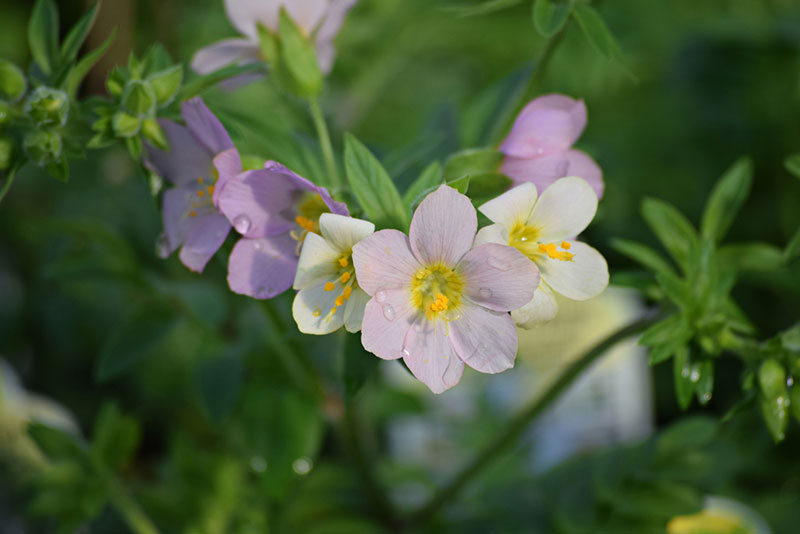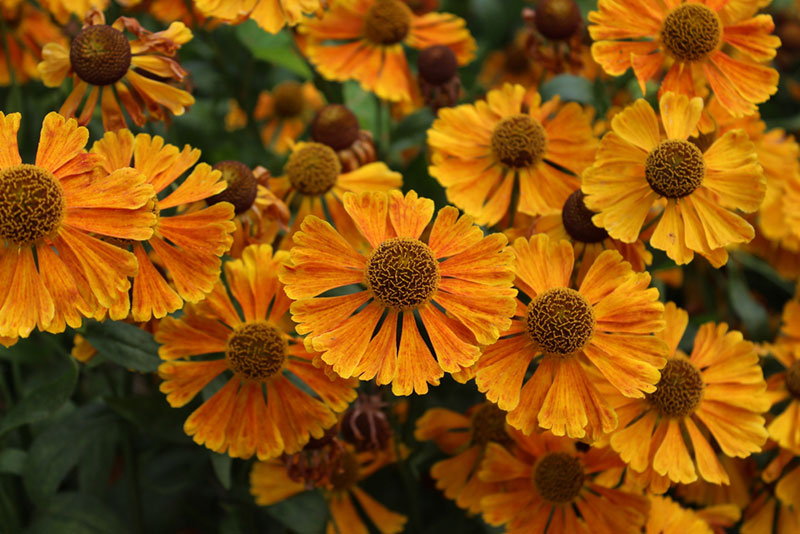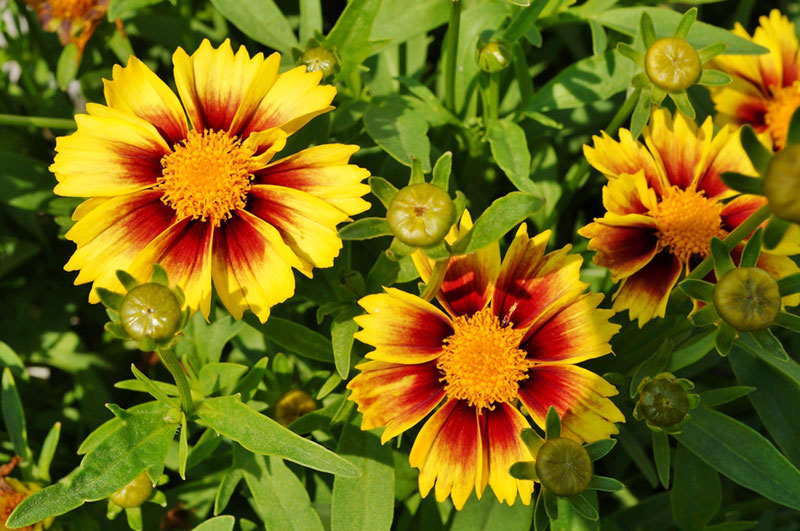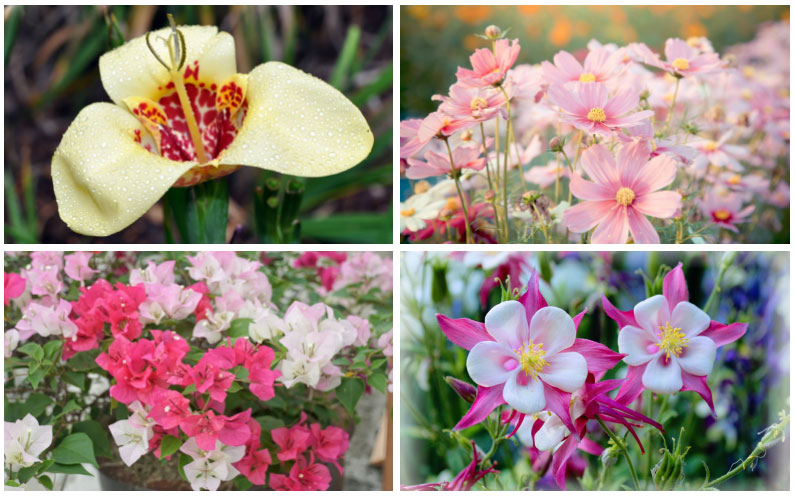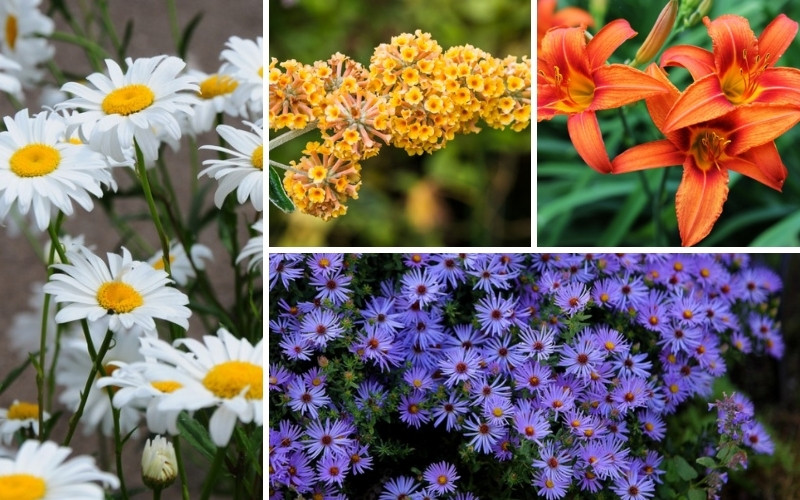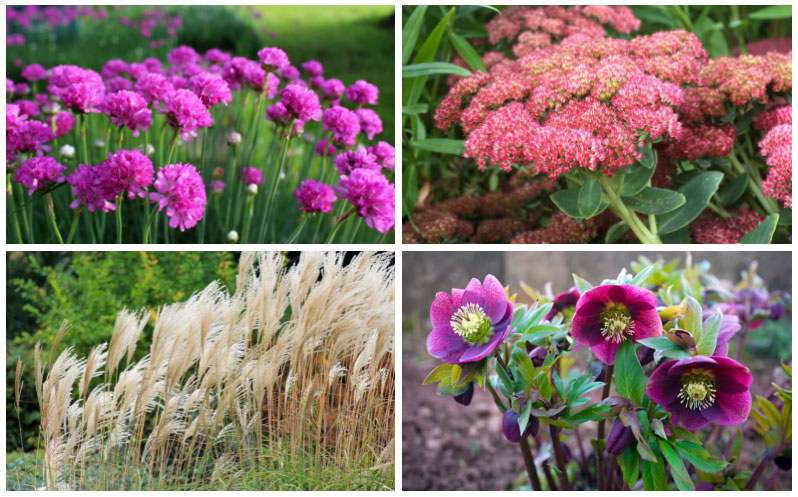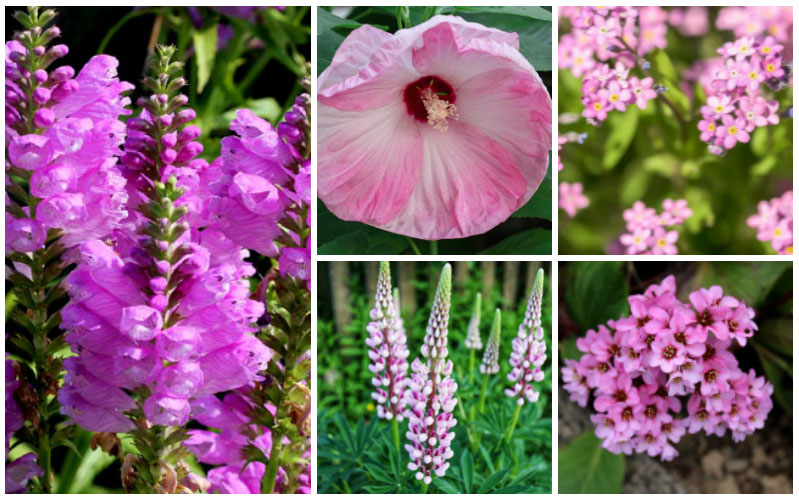
The color pink is the universal color of love for both self and others. It represents affection, romance, charm, and happiness.
Pink flowers in your garden can’t help but bring a smile to your face. After all, there’s a meaning the expression “tickled pink” translates to being completely content and happy.
Whether you prefer a delicate pale pink, a deep magenta, a rosy pink, or a dazzling hot pink, we’ve compiled some of the most stunning pink perennials to add to your garden.
Bergenia
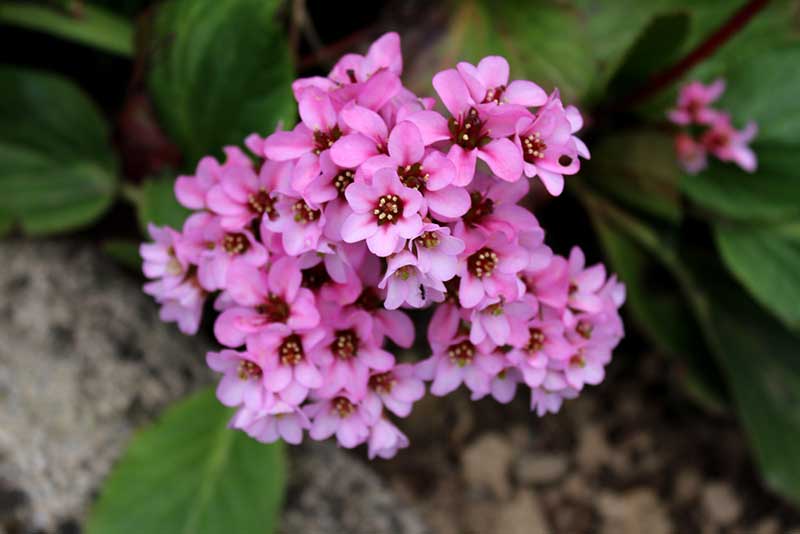
Bergenia is a lovely heart-leaved flower that is commonly called “pigsqueak” because of the sound that resonates when two of the flowers are rubbed together. This flower blooms with large rosettes above glossy, dark green leaves. The plant is commonly used as ground cover due to its slow-spreading nature. This exceptionally low-maintenance plant thrives in partial to full shade and grows best in zones 3-8.
Foxglove

This eye-catching flower features a cascade of slender, bell-shaped blooms that vary in color but typically bloom in pink or purple. As a note, foxglove is extremely poisonous to both humans and animals and should not be planted by pet owners in areas where their pet has any access or by people with young children. Foxglove prefers zones 4-10.
Aster
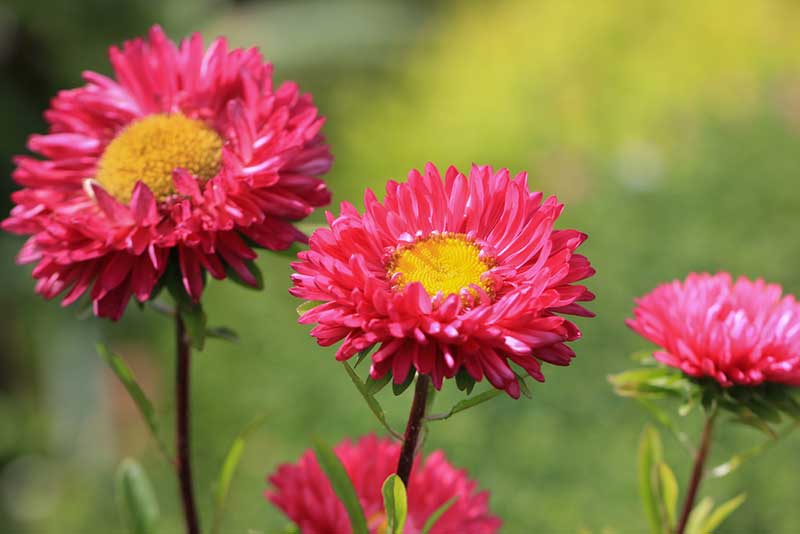
Aster flowers present as a close cousin to the daisy and will bloom strongly in late summer and through October. They are a preferable flower due to the predictability of their blooming and ability to attract pollinators that include butterflies. They typically grow anywhere from 1-4 feet tall and contain more than 250 varying types. Asters prefer full sun and bloom strongest in moist soil in blooms 3-10.
Delphinium
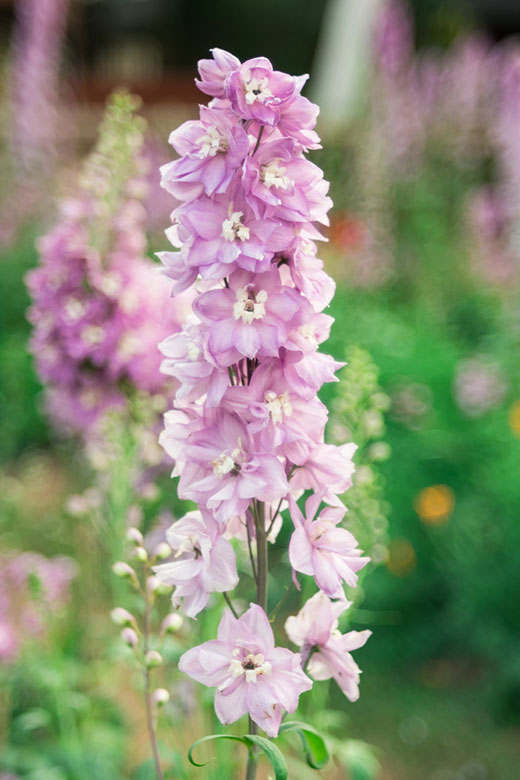
This charming summer flower showcases a spray of spiky florets that burst forth from a towering central stem. Delphiniums are generally planted at the back of the flower bed due to their height and the fact that their blooms are primarily at the top of the flower shoots. They benefit from stakes or twig-support after they receive a foot in height. Delphiniums can be fussy flowers to grow, preferring sunny areas that are very moist, requiring manual watering in areas that receive less than one inch of weekly rainfall. They will do best in zones 3-7 in gardens that are well-composted or contain rich mulch.
Campions
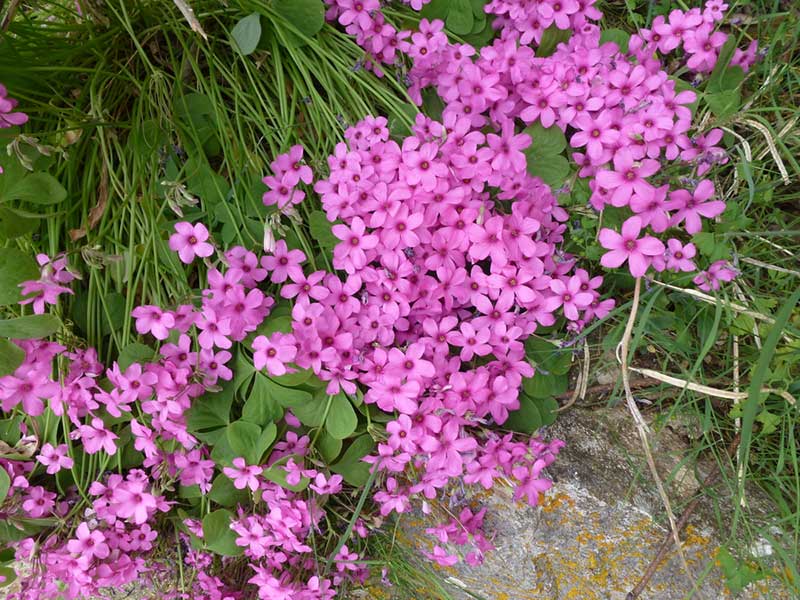
The silver-gray foliage of campion makes it the perfect accent flower for a rock garden or garden border wall. Campions are known for their fantastic neon shades that come in shades like magenta and orange, often with coloring so intense that the flowers seem to take on a showy glow. The flowers bloom in late spring in zones 3-8.
Forget-me-not
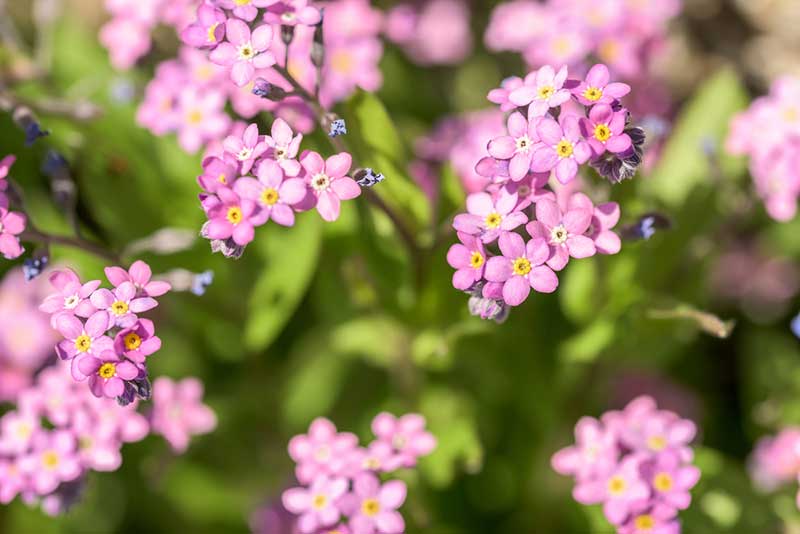
Forget-me-not flowers are the quintessential plant for a cottage-style garden. The charming, five-petaled blooms with pale yellow centers bloom rapidly from May to October. Legend has it that a medieval knight and his love were walking beside a stream while he held a bouquet of these wildflowers. The weight of the knight’s armor eventually pulled him into the water and as he sunk down, he tossed the bouquet to his lady love, shouting with his last breath for her to “forget-me-not.” While forget-me-nots are typically seen in nature in a powder blue shade, the pink variety is absolutely stunning. Forget-me-nots bloom off of fuzzy stems and spread across a garden easily, preferring to blossom in shadier spots. They are often seen in nature growing near streams or small lakes, preferring a damp area with plenty of shade. In a garden, forget-me-nots grow best in shadier areas in zones 3-8.
Rodgersia
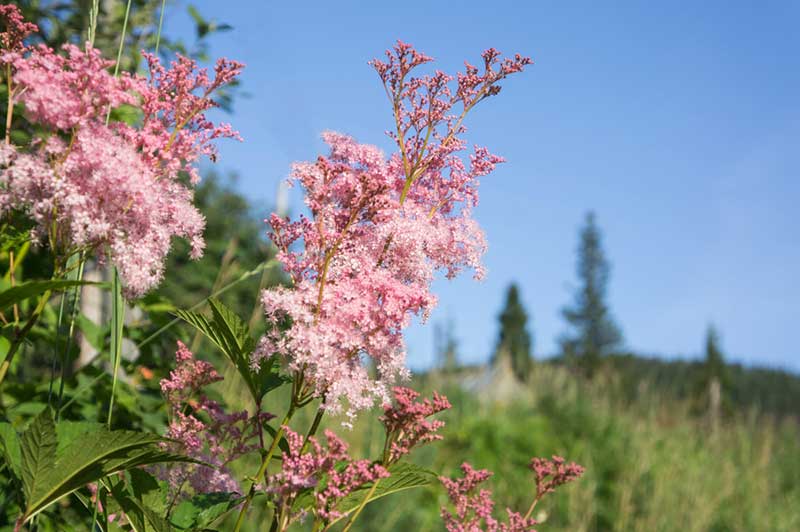
This creamy pink flower blooms in atop a deep green bundle of leaves that contain between six and nine leaflets. This common ground flower is chosen just as much for its delicate little flower bundles as it is for its extremely rich foliage that blooms below the flowers. The plant was named for Rear-Admiral John Rogers who first discovered the flower during a Pacific expedition in the 1850s. Rodgerisa is naturally found in wet areas such as alongside a stream, near a pond or in moist woodland and prefers zones 5-7.
Lily of the Valley
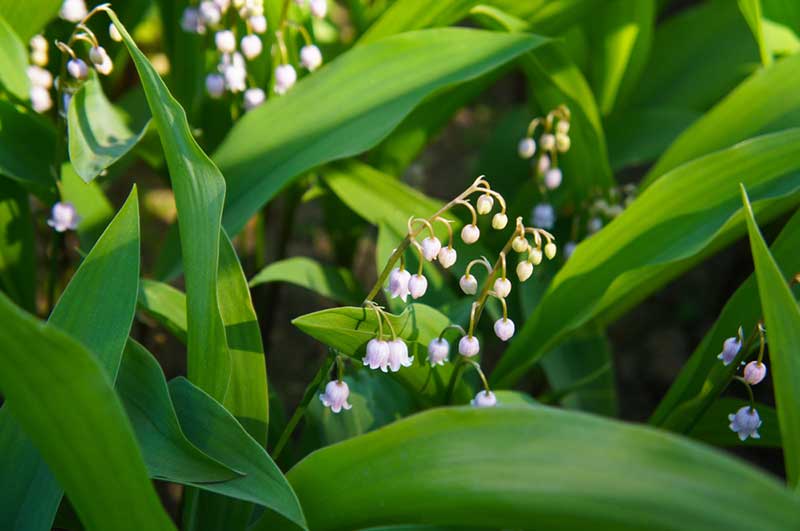
Lily of the valley is treasured for the sweet fragrance the tiny white, bell-shaped blooms emit all throughout spring and summer. These plants love moisture and spread easily, shedding small red seed pods that remain even after blooming. Lily of the valley is relatively easy to grow and will do exceptionally well in most areas, especially zones 2-9.
Fragaria
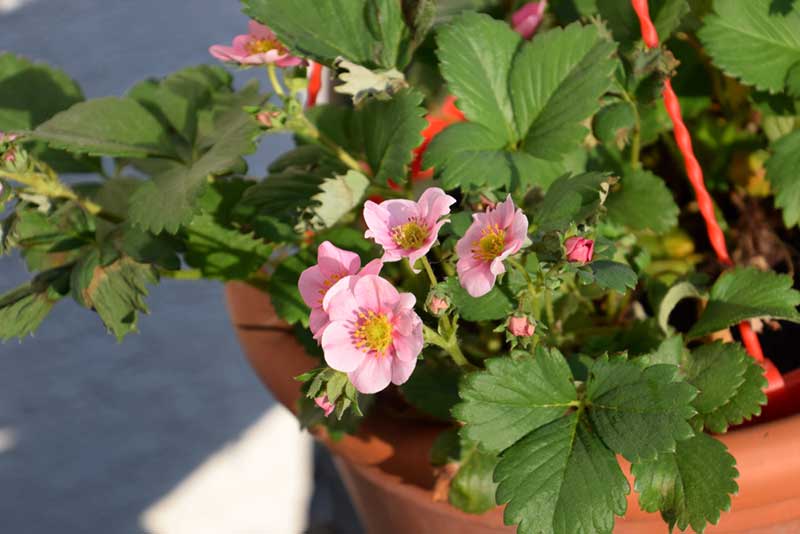
Also known as wild strawberry or woodland strawberry, these small-fruited, stemless plants have 5-petaled white blossoms with yellow centers. They bloom throughout the warmer months of summer and the blooms mix with bright red, edible mini-strawberries. Fragaria is often grown in containers or alongside garden borders and is beloved for their ornamental-sized fruits. They return each year, spreading slightly, in zones 5-9.
Prunella
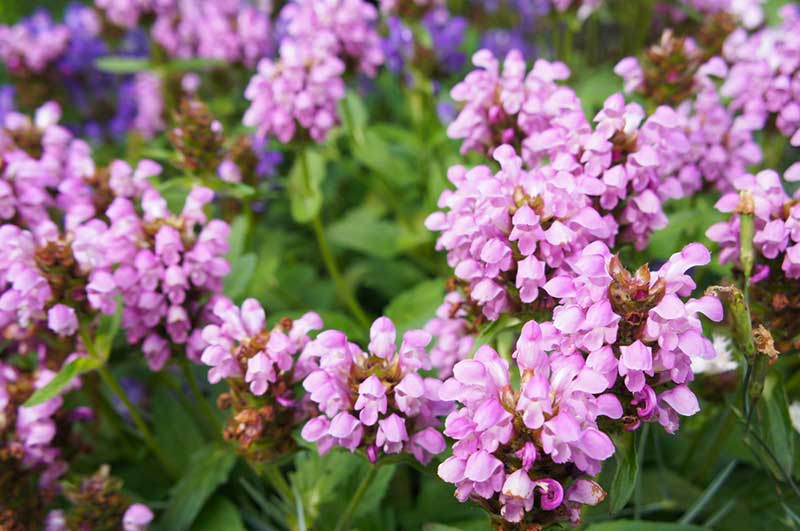
Prunella, a member of the mint family, boasts delicate 2-lipped flowers that bloom atop of spiky stems. They are often winter-tolerant when planted in zones 4-8 and introduced to organically rich soil matter. They can be used as groundcover and will even survive the lawnmower on a high setting to trim down the plot. Prunella flowers are often referred to as ‘Loveliness’ and come in a variety of hues. ‘Pink Loveliness’ is especially desirable due to the glowing shade of pink blooms.
Jacob’s Ladder (Polemonium)
There are two distinct species of the Jacob’s ladder plant, one being found growing as a wildflower and the other developed to thrive in a garden environment. Named for the tiny, fern-like leaflets that rise along the plant’s stem like the ladder in Jacob’s Biblical dream, this woodland flower has an average growth height of one to two feet, consistently re-blooms after being cut back. This woodland flower prefers shady or semi-shady spots in the garden and will blossom nicely in zones 3-8.
Hardy Hibiscus
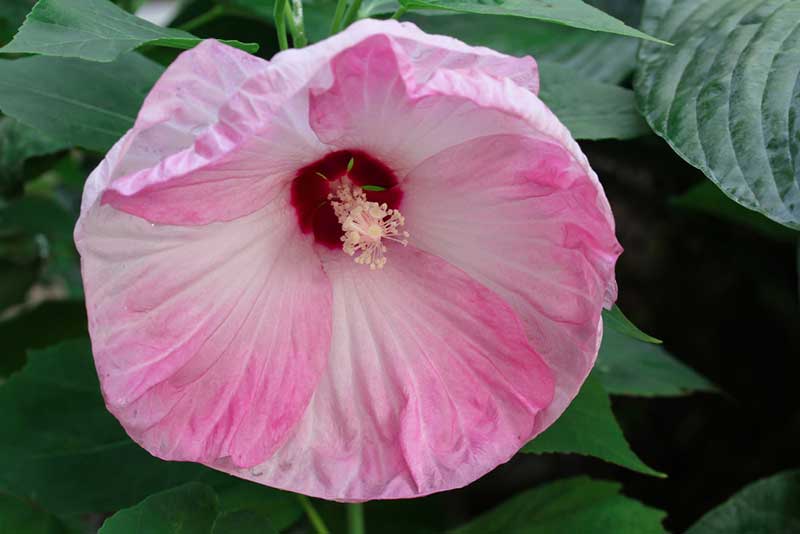
These mid-sized hibiscus shrubs light up tropical gardens with stunning hot pink flowers that feature a deep pink center. If you don’t live in a tropical locale, these flowers can also make a great houseplant. Hardy hibiscus is considered treasured of the garden, blooming so vibrantly in late spring that they can’t help but attract the eyes of passersby. They can generally only grow outside up to zone 4.
Achimenes
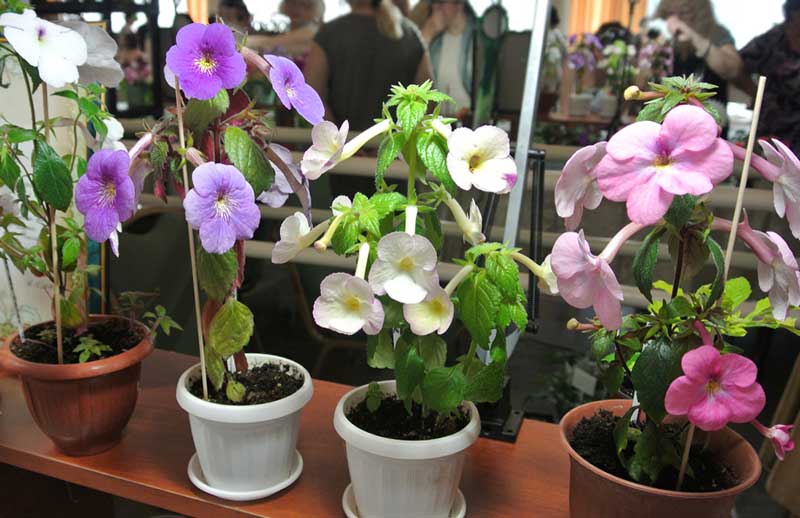
A relative of the African violet, these eloquent, funnel-shaped flowers are also known as cupid’s bow and magic flower. They bloom splendidly from summer to mid-fall. Achimenes is a native flower of Mexico and Central America and will thrive outdoors all year long in zone 7 and zone 8.
Amarcrinum
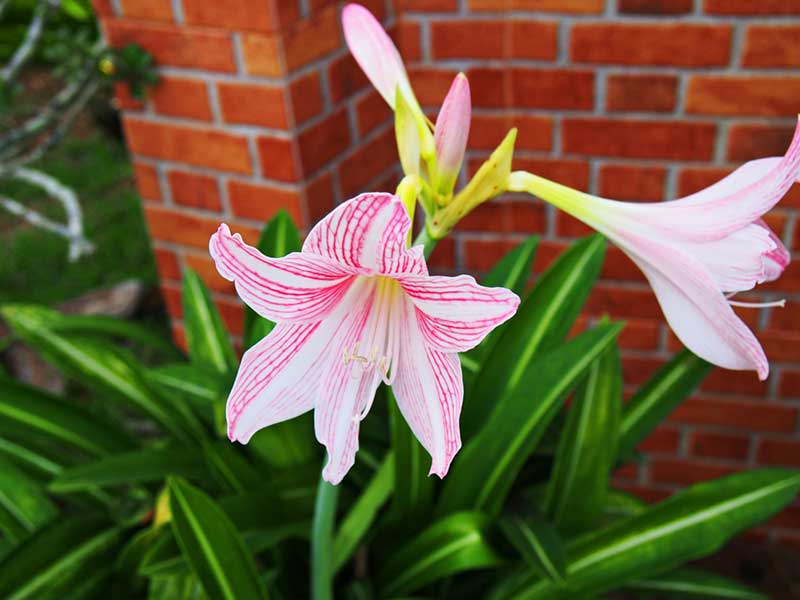
With shell-pink bulbs that are capable of thriving outdoors year round, Amarcrinum also know as Crinodonna lily features lovely, trumpet-shaped flowers that bloom openly on tall, leafless stalks. They grow well typically only in zones 8-10.
Physostegia (Obedient plant)
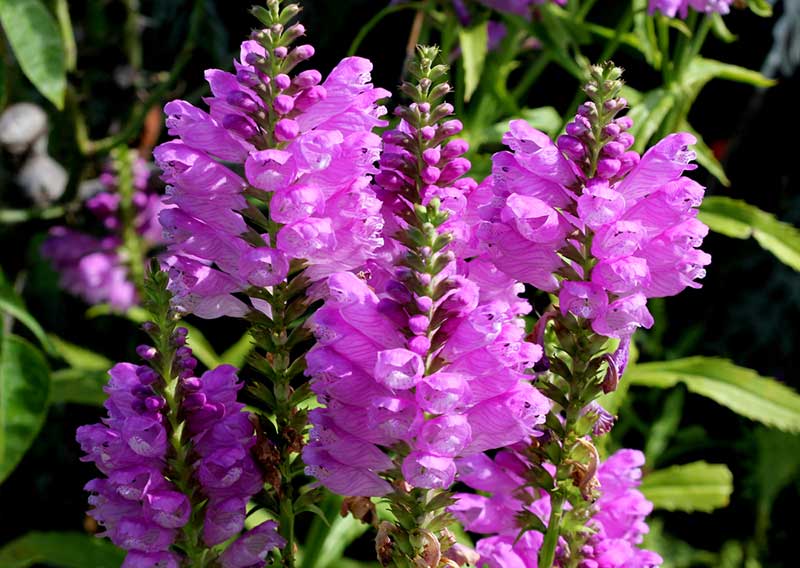
These easy-to-grow flowers prefer a full day of sunlight and are popular in cottage gardens, wild gardens, prairie-style gardens, and in border gardens. They feature small snapdragon-like blooms that vary in color from pale purple to a dazzling shade of pink. Physostegia blooms all summer long and grows well in zones 3-9.
Buddleia (Summer Lilac)
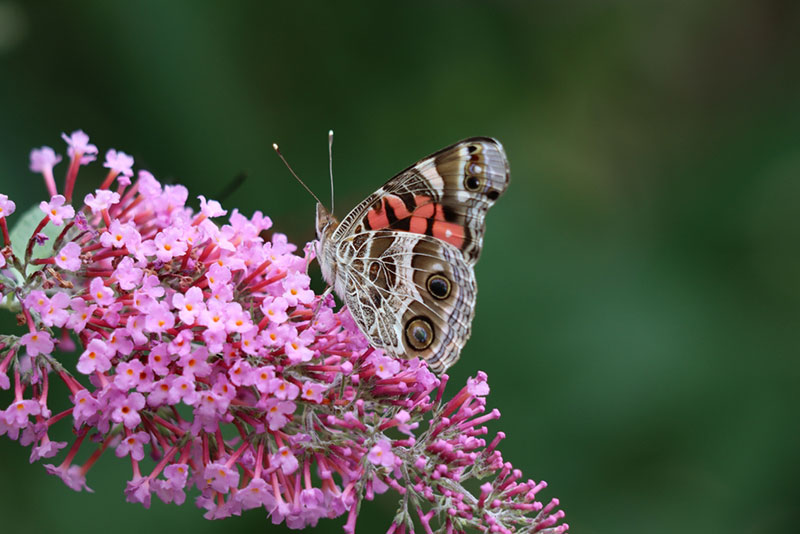
Also known as a butterfly bush, Buddleia davidii is a delightful perennial shrub that produces fragrant lilac-like blooms from summer to fall. Flower color ranges from white, yellow, and orange to beautiful shades of pink, blue, and reddish-purple that attract both hummingbirds and butterflies. It thrives in full sun in well-drained soil with a pH between 5.5 and 7.0. Buddleia is hardy in zones 5 through 10.
Creeping Phlox
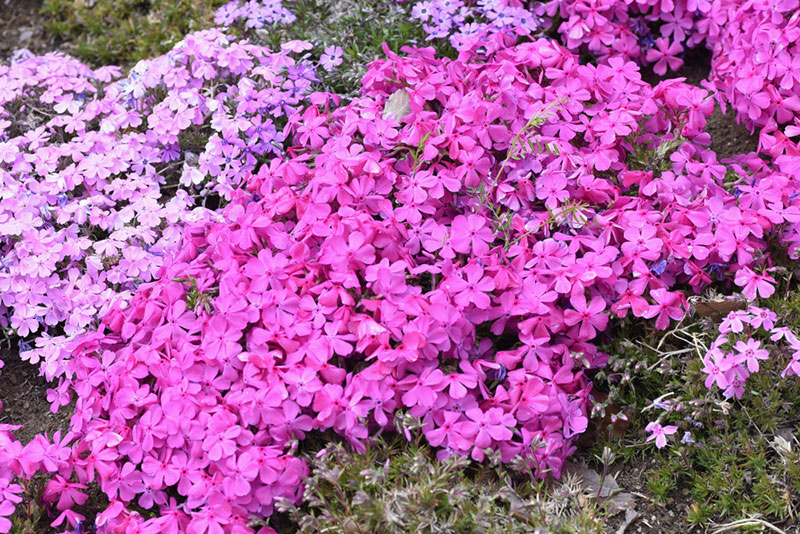
Creeping Phlox (Phlox stolonifera) is a low-growing plant that creeps along the ground, making it ideal as a ground cover or to add to a rock garden. Its needle-like foliage is topped with masses of fragrant blooms that envelope the area with colors from traditional white, lavender, and pink to lovely shades of red and bluish purple. Creeping phlox blooms profusely in the spring, but its foliage remains green and attractive all year. This low-maintenance plant is drought-tolerant and grows in nearly any soil. It is hardy in zones 3 through 9.
Clematis
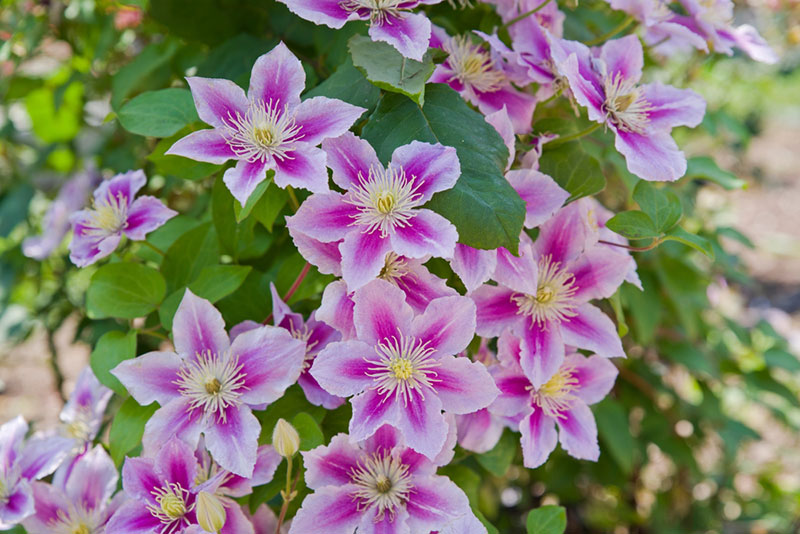
Clematis (Clematis spp.) is a plant genus containing approximately 300 species. These hardy vines grow rapidly and are often grown on trellises for their early spring blooms. Many need full sun, but some varieties thrive in the shade. While some bloom only in spring, others bloom intermittently throughout the summer. Flower colors include shades of white, pink, blue, purple, and red, with many bi-color varieties. They are hardy in zones 3 through 9.
Laura Phlox
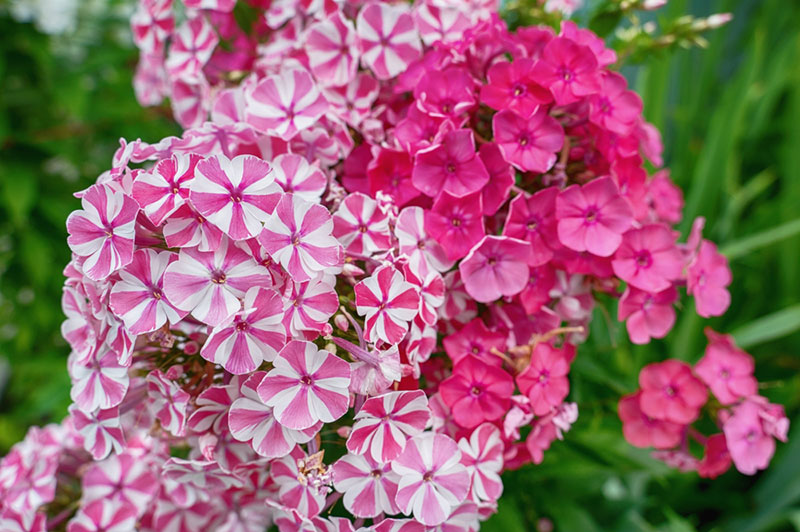
Laura Phlox (Phlox paniculata ‘Laura’) puts on quite a show for weeks in mid to late summer. It produces large pyramidal clusters of 1-inch flowers in a lovely shade of fuchsia, with striking white stars in the center. ‘Laura’ phlox is highly fragrant and will scent the entire yard, especially at night. It attracts hummingbirds, bees, and butterflies. It needs full sun and well-drained soil with medium moisture. ‘Laura’ Phlox is resistant to powdery mildew that often affects garden phlox in humid weather. It is hardy in zones 4 through 8.
Oriental Lily (stargazer)
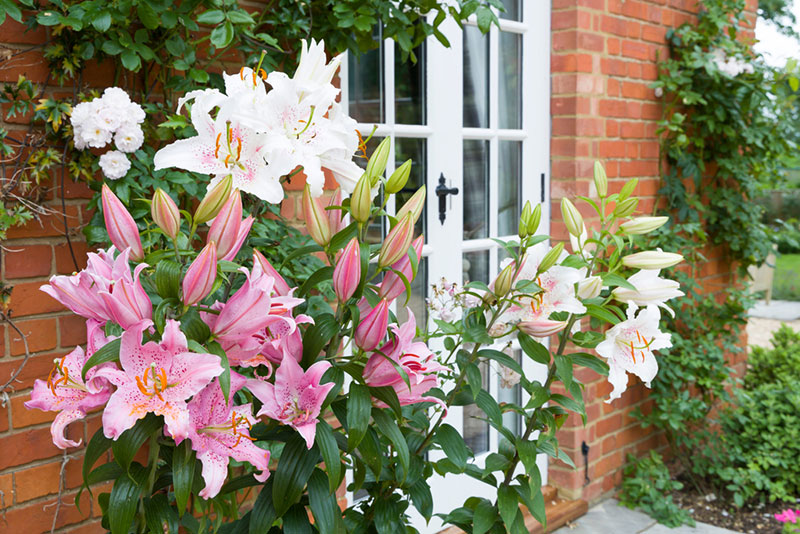
The Oriental Lily (Stargazer)! With captivating bloom colors in pink, white, and crimson, this plant is a true showstopper. It thrives in USDA zones 4-9. Plant in well-drained soil, provide ample sunlight, and water regularly. Tip: You may want to consider staking tall stems.

